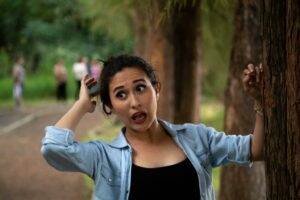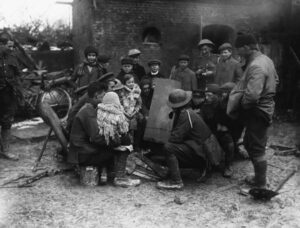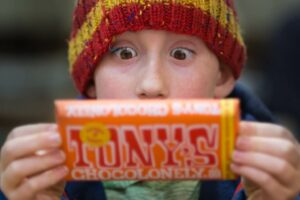The origin of the term “Jack O’ Lantern” indeed ties back to the ignis fatuus or “foolish fire”, but there’s more to the story. This term, as you noted, was first used in East Anglia in the mid-17th century. However, it’s essential to connect this to the tradition of carving pumpkins. The practice began with the Irish myth of “Stingy Jack”, who tricked the devil and, as a consequence, was doomed to roam the Earth with only a burning coal for light, which he placed in a carved-out turnip. When Irish immigrants arrived in America, they found that pumpkins were more plentiful and easier to carve, thus transitioning the tradition from turnips to pumpkins.
The evolution of the word “witch” from Old English is accurate. However, it’s interesting to delve deeper into the societal perceptions that shaped the term. Initially, the words “wicca” and “wicce” weren’t exclusively associated with evil or malevolent practices. Over time, due to various socio-religious changes, especially during the Early Modern Period, the term “witch” became heavily associated with dark magic and sorcery, leading to the witch trials.
The connection between Halloween, candy pumpkins, and Daylight Saving Time seems a bit stretched. The Uniform Time Act of 1966 did standardize Daylight Saving Time in the U.S., but its primary motivation wasn’t related to Halloween. Instead, it aimed to conserve energy and provide more daylight during working hours. However, the act’s impact on Halloween safety, particularly for children trick-or-treating in the evening, is a relevant and interesting point to explore.
The explanation of witches on broomsticks involving hallucinogenic ointments is one theory among several. This interpretation originates from folklore and reports during witch trials, where accused witches often described flying experiences. The broomstick’s symbolism is also tied to pagan rituals and may have been exaggerated during the witch trials as part of the narrative to demonize pagan practices.
Trick-or-treating has roots in medieval practices like “souling” and “guising”, where people would go door-to-door, performing or praying in exchange for food. It evolved over time, particularly in America, into the modern practice of children dressing up and asking for candy. This tradition reflects a blend of various cultural influences, including European folklore and American consumer culture.
More Halloween Traditions
The Headless Horseman, a prominent figure in European folklore, particularly in Ireland and Scotland, has become a Halloween icon. The legend speaks of a ghostly figure, often a soldier, who lost his head in battle and roams the night in search of it. This tale was popularized by Washington Irving’s “The Legend of Sleepy Hollow” and has since become a staple in Halloween storytelling.
Black cats have long been associated with Halloween and superstitions. In medieval folklore, black cats were often believed to be witches’ familiars or transformed witches themselves. This belief led to the unfortunate persecution of black cats, especially during the Salem witch trials. Today, they remain a symbol of mystery and superstition in Halloween celebrations.
Samhain, an ancient Celtic festival, marks the end of the harvest season and the beginning of winter. Celts believed that on Samhain, the veil between the living and the dead was thinnest, allowing spirits to cross over. This belief is the foundation of many Halloween traditions, such as wearing costumes to ward off harmful spirits and lighting bonfires.
While not a Halloween tradition per se, the Mexican Day of the Dead (Día de los Muertos) shares a similar timeframe and themes with Halloween. Celebrated on November 1st and 2nd, it’s a time to honor deceased loved ones through vibrant celebrations, elaborate altars, and traditional foods. It’s a beautiful example of how different cultures interpret and commemorate the relationship between life and death.
Choosing the Perfect Pumpkin for Your Jack O’ Lantern
When selecting a pumpkin for your Jack O’ Lantern, look for one with a flat bottom so it sits stably. Check for a firm texture with no soft spots, which indicates freshness and longevity. Remember, your Jack O’ Lantern is more than just a decoration; it’s a nod to the ancient tradition of warding off Stingy Jack and other wandering spirits.
Crafting an Authentic Witch Costume
To capture the essence of historical witches in your costume, focus on realism rather than stereotypes. Use natural fabrics like linen or wool for your outfit, and consider adding a herb pouch or a small cauldron as accessories. This approach pays homage to the old-world witches, who were often herbalists and healers in their communities.
For a unique Halloween experience, try creating a harmless, non-hallucinogenic version of the witches’ flying ointment. Mix herbs like lavender and sage in a base of beeswax and olive oil. Apply it as a scented balm to get into the spirit of the season, recalling the old tales of witches and their magical flights.
Hosting a Samhain-Inspired Feast
Celebrate Halloween with a Samhain-inspired feast. Prepare dishes using seasonal harvest ingredients like apples, pumpkins, and root vegetables. You’re not just throwing a party; you’re participating in an age-old tradition that celebrates the end of the harvest and honors ancestral spirits.
Incorporating Day of the Dead Traditions
Blend Day of the Dead customs into your Halloween celebrations. Set up a small altar with photos of loved ones who have passed, and decorate it with marigolds and candles. This can be a heartfelt way to remember family and friends, connecting Halloween’s spooky fun with a deeper historical and cultural significance.
Understanding the Significance of Black Cats
Learn about the history of black cats in Halloween folklore. Share this knowledge with your friends and family to dispel myths and superstitions. If you’re a pet owner, remember to keep your black cat indoors on Halloween for safety, as they are often unfairly targeted due to old superstitions.
Safely Enjoying Trick-or-Treating
Prioritize safety while trick-or-treating. Wear reflective accessories or incorporate glow sticks into your costume for visibility. Always check your candy before eating, and only visit well-lit houses in familiar neighborhoods. This practice ensures a fun and safe Halloween for you and your little ghouls and goblins.
This Halloween, as you engage in the annual traditions of carving pumpkins, dressing up, and trick-or-treating, take a moment to appreciate the historical roots of these practices. By choosing your pumpkin thoughtfully, you’re participating in a centuries-old tradition. Creating a witch costume or a non-hallucinogenic flying ointment connects you with the misunderstood history of witchcraft. Hosting a feast inspired by ancient festivals or setting up a Day of the Dead altar allows you to celebrate while honoring the past. Even understanding the role of black cats in Halloween lore helps dispel myths and adds richness to your celebration. This year, let the depth of history enhance your Halloween enjoyment, making it not just a night of fun but a tribute to the fascinating stories that shaped these traditions.

Giant pandas, with their distinctive black and white fur and […]

Since its incorporation into Los Angeles in 1910, Hollywood has […]

The phrase “peanut gallery” may sound like a playful term, […]

During the Industrial Revolution, companies often enforced grueling work hours, […]

Ever wondered why sugar doesn’t spoil, even when left out […]
